Grow Purple Carrots at Home and unlock a vibrant splash of color in your garden and on your plate! Have you ever wondered how to add a touch of magic to your meals? Imagine pulling a carrot from the earth, not the familiar orange, but a deep, regal purple. It’s not just a novelty; it’s a delicious and nutritious adventure waiting to happen, and I’m here to guide you through it!
Purple carrots aren’t a modern invention; in fact, they’re closer to the original carrots cultivated centuries ago in the Middle East and Asia. Before the 17th century, when orange carrots were popularized in the Netherlands, purple, yellow, and white carrots were the norm. Bringing back these colorful roots is like reconnecting with the history of our food!
But why should you bother with this DIY project? Well, beyond their stunning appearance, purple carrots are packed with anthocyanins, powerful antioxidants that offer a range of health benefits. Plus, growing your own food, especially something as unique as purple carrots, is incredibly rewarding. It’s a fantastic way to connect with nature, reduce your carbon footprint, and enjoy fresh, healthy produce. This DIY guide will provide you with simple, effective tricks and hacks to successfully grow purple carrots at home, even if you’re a complete beginner. Let’s get started and transform your garden into a colorful, healthy haven!
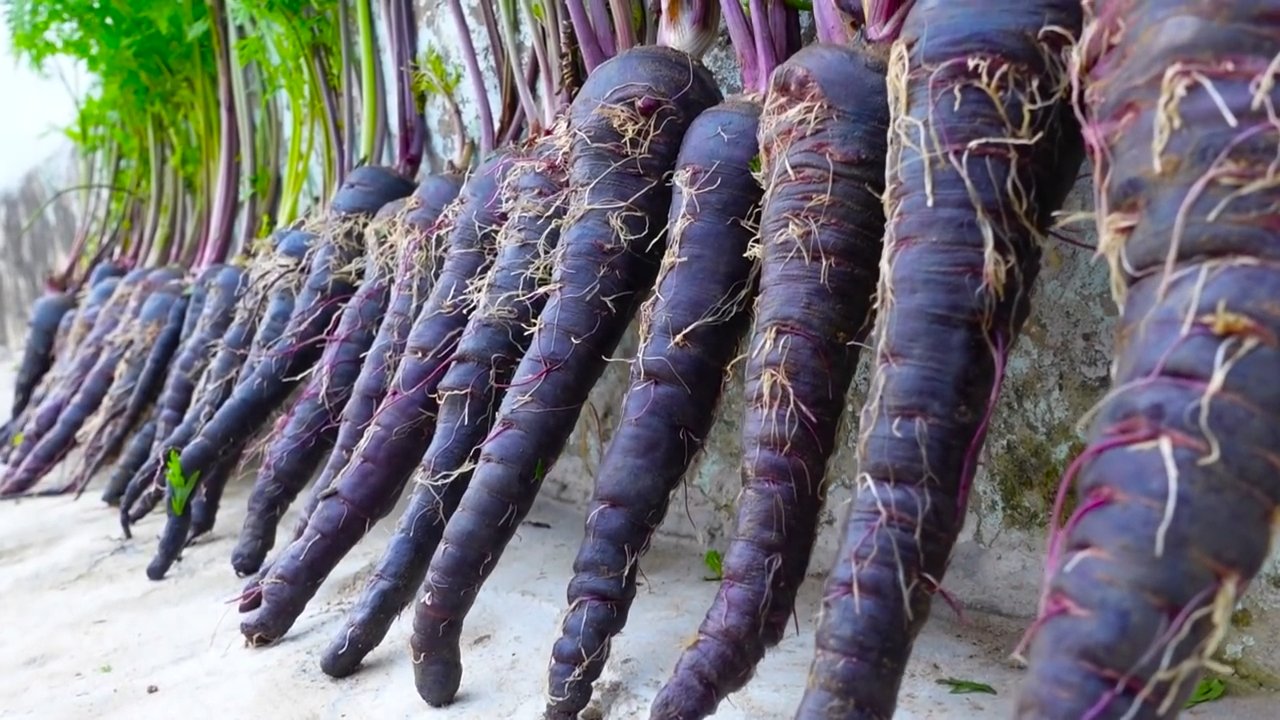
Growing Purple Carrots Yourself: A Colorful DIY Garden Project
I love enriching my garden with unusual plants, and purple carrots are at the top of the list! They are not only beautiful to look at, but also super healthy and bring color to the plate. In this article, I will show you how you can easily grow purple carrots yourself. Don’t worry, it’s easier than you think!
What you need for growing purple carrots
Before we get started, here is a list of everything you will need:
- Purple carrot seeds: Be sure to buy high-quality seeds from a reputable supplier. There are different varieties of purple carrots, such as ‘Purple Haze’ or ‘Deep Purple’.
- Gardening tools: A shovel, a rake, and possibly a dibber are helpful.
- Good soil: Carrots prefer loose, sandy soil. Heavy clay soils can hinder growth.
- Compost or organic fertilizer: To enrich the soil with nutrients.
- Watering can or garden hose: For watering.
- Mulch (optional): To retain moisture in the soil and suppress weeds.
- Patience: Carrots need time to grow!
The Preparation: The Key to Success
Before you put the seeds in the ground, good preparation is crucial.
Soil Preparation
- Choose the right location: Purple carrots need a sunny location with at least 6 hours of direct sunlight per day.
- Loosen the soil: With a shovel or digging fork, loosen the soil to a depth of about 30 cm. Remove stones, roots, and other obstacles.
- Improve the soil quality: Mix compost or organic fertilizer into the soil to enrich it with nutrients and improve drainage. Carrots do not like soil that is too acidic; the pH should be between 6.0 and 7.0.
- Create a level surface: Rake the soil smooth to create a level surface for sowing.
Sowing
- Choose the right time: The best time to sow purple carrots is in the spring (March/April) or late summer (August/September). Pay attention to the information on the seed packet, as the optimal sowing time may vary depending on the variety.
- Make seed drills: With a dibber or a stick, make seed drills with a distance of about 20-30 cm between them. The drills should be about 1-2 cm deep.
- Sow the seeds: Sow the seeds thinly in the drills. Carrot seeds are very small, so it is important not to sow too many seeds at once. You can also mix the seeds with some sand to make sowing easier.
- Cover with soil: Carefully cover the seeds with a thin layer of soil.
- Water in: Water the soil gently to moisten the seeds. Be careful not to flood the soil too much.
The Care: So Your Carrots Thrive
After sowing, proper care is crucial for your purple carrots to thrive.
Watering
- Water regularly: Keep the soil moist, but not wet. Regular watering is especially important during germination and early growth.
- Water deeply: It is better to water less often, but deeply, so that the water also reaches the deeper roots.
- Keep the leaves dry: Avoid watering the leaves, as this can promote fungal diseases.
Weed Control
- Remove weeds regularly: Weeds compete with the carrots for nutrients and water. Therefore, remove weeds regularly, preferably by hand.
- Mulching: A layer of mulch made of straw, wood chips, or grass clippings can help suppress weeds and retain moisture in the soil.
Thinning
- Thin when the seedlings are large enough: When the seedlings are about 5-7 cm tall, you should thin them so that they have enough space to grow.
- Keep a distance: Leave a distance of about 5-7 cm between the individual plants.
- Remove weak plants: Remove the weakest plants to give the stronger plants more space.
Fertilizing
- Fertilize again (optional): If you find that your carrots are not growing well, you can fertilize them again with an organic fertilizer.
- Do not over-fertilize: Over-fertilizing can lead to excessive leaf growth and small carrots.
Protection from Pests and Diseases
Even though carrots are relatively robust, they can be affected by pests and diseases.
Possible Pests
- Carrot fly: The larvae of the carrot fly feed on the roots and can damage the carrots.
- Prevention: Use crop protection nets to protect the carrots from the carrot fly.
- Control: Remove infested plants and, if necessary, use biological pesticides.
- Aphids: Aphids suck on the leaves and can impair growth.
- Control: Spray the leaves with a jet of water or use a soap solution.
Possible Diseases
- Downy mildew: Downy mildew is a fungal disease that manifests itself as a white coating on the leaves.
- Prevention: Ensure good ventilation and avoid watering the leaves.
- Control: Remove infested leaves and, if necessary, use a fungicide.
The Harvest: The Reward for Your Efforts
After about 70-80 days (depending on the variety), your purple carrots are ready to harvest.
- Recognize the harvest time: The carrots are ready to harvest when they have reached the desired size. You can carefully pull a carrot out of the ground to check if it is ripe.
- Harvest: Loosen the soil around the carrots with a digging fork or shovel. Carefully pull the carrots out of the ground by their leaves.
- Clean: Remove the soil from the carrots and cut off the leaves.
- Store: Store the carrots in a cool, dark, and humid place. You can also store them in the refrigerator.
Why Purple Carrots are so Special
Purple carrots are not only a visual highlight, but also valuable for your health.
- High anthocyanin content: The purple color of the carrots comes from anthocyanins, powerful antioxidants that can protect against cell damage.
- Rich in vitamins and minerals: Purple carrots contain many vitamins (e.g., vitamin A, vitamin C) and minerals (e.g., potassium).
- Health benefits: Anthocyanins can reduce the risk of heart disease, cancer, and other chronic diseases.
Use in the Kitchen
Purple carrots are versatile in the kitchen.
Cooked: They are excellent for soups, stews, and vegetable side dishes.
Raw: You can eat them raw as a snack or use them in salads.
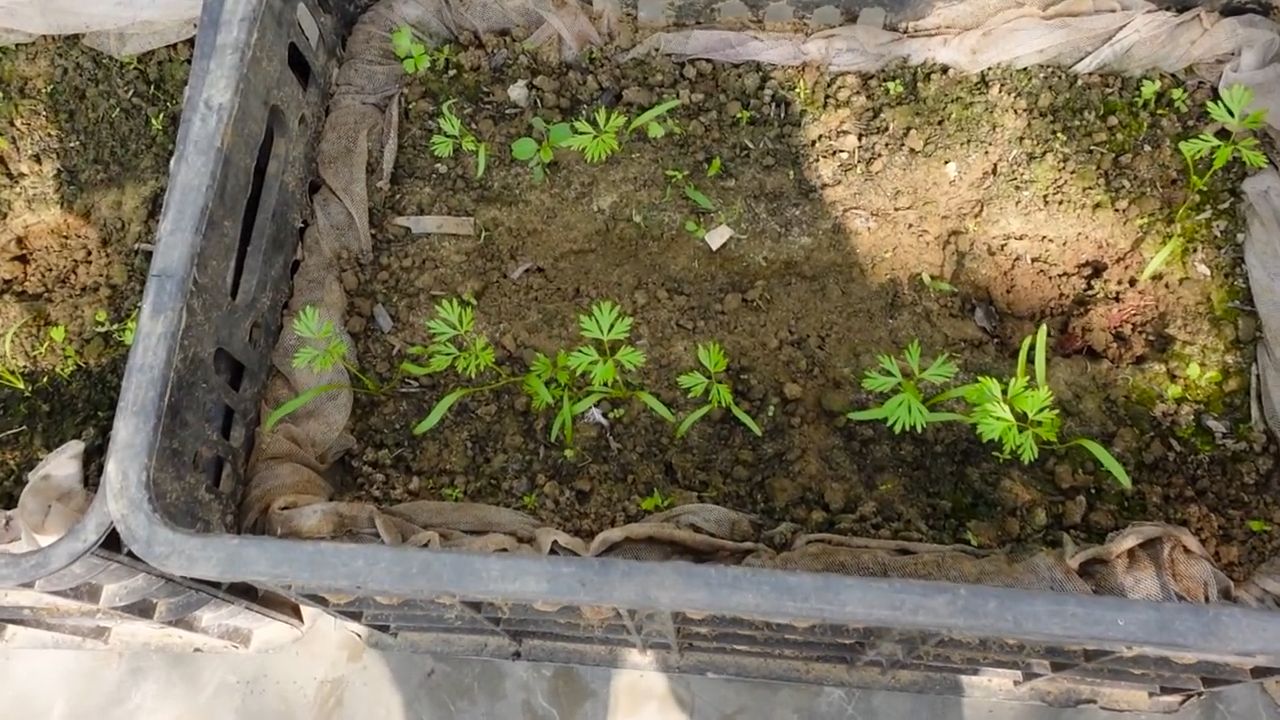
Conclusion
So, there you have it! Growing your own vibrant, purple carrots at home is not only achievable but also a deeply rewarding experience. Forget the limited selection at the grocery store and embrace the joy of harvesting carrots bursting with color and flavor, right from your own garden. This isn’t just about adding another vegetable to your plate; it’s about adding a conversation starter, a nutritional powerhouse, and a splash of artistic flair to your culinary creations.
Why is this DIY trick a must-try? Because it empowers you to take control of your food source, ensuring you’re consuming the freshest, most nutrient-rich produce possible. Store-bought carrots, even organic ones, often lack the vibrancy and flavor of homegrown varieties. Plus, the sheer satisfaction of nurturing a seed into a thriving plant, culminating in a beautiful, purple carrot, is unparalleled. It’s a connection to nature that’s both grounding and inspiring.
Beyond the standard purple carrot, consider experimenting with different varieties. ‘Purple Dragon’ carrots offer a spicy kick, while ‘Cosmic Purple’ boasts a sweet, earthy flavor. You can also play with planting times to stagger your harvest and enjoy purple carrots throughout the growing season. Don’t be afraid to interplant them with companion plants like rosemary or sage, which can help deter pests and enhance their flavor.
And speaking of flavor, purple carrots aren’t just about aesthetics. They possess a unique sweetness that complements both sweet and savory dishes. Roast them with herbs and a drizzle of honey for a simple yet elegant side dish. Grate them into salads for a pop of color and added crunch. Or, juice them for a vibrant and healthy beverage. The possibilities are endless!
We wholeheartedly encourage you to embark on this purple carrot growing adventure. It’s a relatively simple project that yields incredible results. Imagine the delight of pulling those first vibrant carrots from the soil, knowing you nurtured them from seed to harvest. The taste, the color, the sheer pride – it’s an experience you won’t soon forget.
Don’t just take our word for it. Give it a try! Start small, perhaps with a single raised bed or even a few containers on your patio. Follow our guide, adapt it to your specific climate and growing conditions, and watch the magic unfold.
Most importantly, we want to hear about your experience! Share your photos, tips, and triumphs with us in the comments below. Let’s create a community of purple carrot enthusiasts, sharing our knowledge and inspiring others to embrace the joy of homegrown goodness. Did you discover a particularly effective pest control method? Did you find a unique way to prepare your purple carrots? We’re all ears! Your insights could be invaluable to fellow gardeners. So, get your hands dirty, embrace the challenge, and let’s grow some amazing purple carrots together! Remember, mastering the art of growing purple carrots is a journey, not a destination. Enjoy the process, learn from your mistakes, and savor the fruits (or vegetables!) of your labor.
Frequently Asked Questions (FAQ)
What are the best conditions for growing purple carrots?
Purple carrots, like most carrots, thrive in well-drained, loose soil that is rich in organic matter. They prefer full sun, meaning at least 6-8 hours of direct sunlight per day. The ideal soil pH is between 6.0 and 7.0. Before planting, amend your soil with compost or well-rotted manure to improve drainage and fertility. Avoid rocky or compacted soil, as this can lead to misshapen carrots.
How often should I water my purple carrots?
Consistent moisture is crucial for carrot development. Water deeply and regularly, especially during dry periods. Aim to keep the soil consistently moist but not waterlogged. A good rule of thumb is to water when the top inch of soil feels dry to the touch. Mulching around your carrot plants can help retain moisture and suppress weeds.
When is the best time to plant purple carrots?
The timing of planting depends on your climate. In cooler regions, you can start planting purple carrots in early spring, as soon as the soil is workable. In warmer regions, you can plant them in late summer or early fall for a winter harvest. Carrots are cool-season crops and prefer temperatures between 60°F and 70°F. Check your local planting calendar for specific dates.
What are some common pests and diseases that affect purple carrots?
Common pests that can affect purple carrots include carrot rust flies, aphids, and nematodes. Carrot rust flies lay their eggs near the base of the plants, and the larvae burrow into the roots, causing damage. Aphids suck the sap from the leaves, weakening the plants. Nematodes are microscopic worms that live in the soil and can damage the roots. To prevent pest problems, practice crop rotation, use row covers, and introduce beneficial insects like ladybugs. Diseases that can affect purple carrots include leaf blight and powdery mildew. Ensure good air circulation around your plants and avoid overhead watering to prevent these diseases.
How long does it take for purple carrots to mature?
Purple carrots typically take 70-80 days to mature, depending on the variety and growing conditions. You can start harvesting them when they reach a size that is suitable for your needs. Smaller carrots will be more tender, while larger carrots will have a more intense flavor. To harvest, gently loosen the soil around the carrot and pull it straight up.
Can I grow purple carrots in containers?
Yes, you can successfully grow purple carrots in containers, provided you choose a container that is deep enough to accommodate their root growth. A container that is at least 12 inches deep is recommended. Use a well-draining potting mix and ensure that the container has drainage holes. Water regularly and fertilize with a balanced fertilizer every few weeks.
Are purple carrot seeds different from regular carrot seeds?
No, purple carrot seeds are the same size and shape as regular carrot seeds. The only difference is the variety of carrot they will produce. You can purchase purple carrot seeds from most garden centers or online seed suppliers.
How do I store purple carrots after harvesting?
To store purple carrots after harvesting, remove the tops and gently brush off any excess soil. Store them in a cool, dark, and humid place, such as a refrigerator crisper drawer. You can also store them in a root cellar or bury them in sand. Properly stored purple carrots can last for several months.
Why are my purple carrots not as purple as I expected?
The intensity of the purple color in purple carrots can vary depending on several factors, including the variety, soil conditions, and sunlight exposure. Some varieties are naturally more intensely colored than others. Soil that is rich in organic matter and well-drained can also contribute to better color development. Adequate sunlight is also essential for producing vibrant purple carrots.
Can I eat the greens of purple carrots?
Yes, the greens of purple carrots are edible and nutritious. They have a slightly bitter taste and can be used in salads, soups, or stir-fries. However, it’s best to harvest the greens when they are young and tender, as they can become tough and bitter as they mature. Be sure to wash them thoroughly before eating.


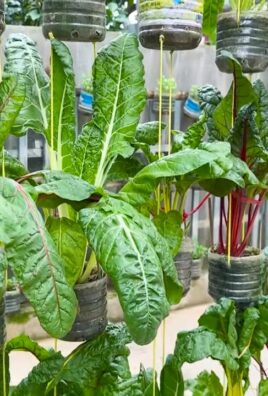
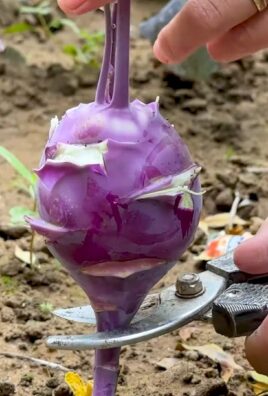
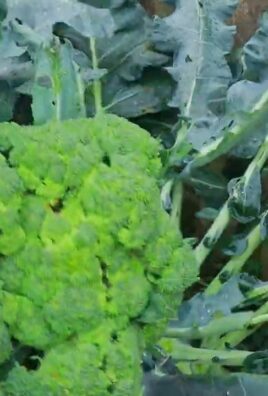
Leave a Comment